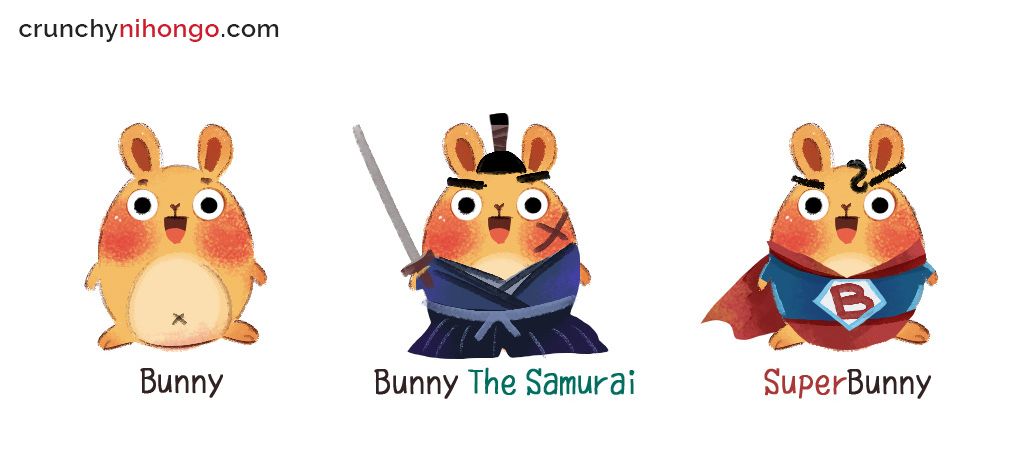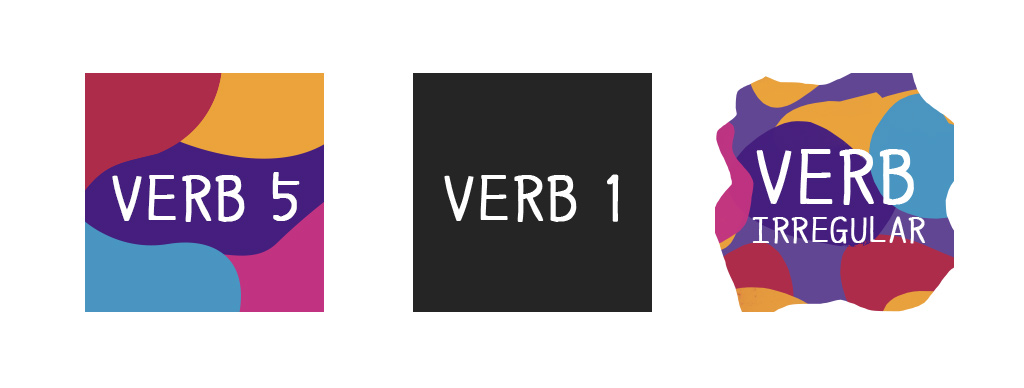Hi ! We hope this site helps you! ٩(ˊᗜˋ*)و As an Amazon Associate, we earn from qualifying purchases without additional cost. Click to read more about our Privacy Policy or Affiliate Disclosure
Introduction again?
Why there are so many introduction ?? Anyway, there are Verbs and Adjectives in English. So why should we bother to read about them again ?
Why talking about verbs & adjective we already know?
Verbs & Adjectives have a specific types.
In Japanese, the core of grammar is in how to modified/conjugate the verbs, adjective, and nouns. And depending on the type of verbs/adjective, the formula will be different. That is why it’s important to know about the type first before starting to learn the basic sentence.
It’s for the beginners, to lay a good foundation.
So learner will have a strong logical sense to the grammatical rules and thus make the journey to learn much more easier. Although it’s recommended, you can skip the introduction if you are not a beginner.
°˖✧◝(⁰▿⁰)◜✧˖°
Important Make sure to master hiragana first before starting to learn about grammar even if you don’t want to learn the written Japanese. Since the grammar formula is very heavily depend on the hiragana (Japanese alphabet). There are textbooks which tried to teach using just romaji, but it makes the formula harder to be memorised & more confusing.
Don’t worry, using our guide here you can [learn hiragana with ease]. Master it as fast as a few days!
VERBS
Verb is words which describe action of something.
Important To understand japanese sentence, learning about the grammar rules might be more important than vocabularies.
Verbs in real sentence, are not like the verbs you know & love…
For example, you’ve memorized very well that YOMU is the dictionary form of to read. But in most cases, you will not find YOMU in real life sentence!
Instead you will find it as YONDE/ YOMANAI / YOMIMASU / YOMIMASENDESHITA /etc . And whoop!! You will be very clueless to the meaning of the word in the sentence. Japanese conjugation change the word so much that you might not recognize it anymore unless you read the kanji.
…………………………………………..
Verb forms
To describe more details about the action (verb), Japanese conjugate additional words behind it. Change it into a different form which make it have different meaning.
Confused?
Think about a regular bunny named Bunny (please kindly ignore the uncreative name). Now add a stereotype word on it. For example: Bunny The Samurai or SuperBunny. In an instant, it will change the original perceptions of our regular bunny.
That’s how verb conjugation forms work in Japanese…
(๑•̀ㅂ•́)و✧

…………………………………………..
Actually, we have somewhat similar things like this in English.
Let’s use the word Act for example…
By adding some word on it’s back, the word meaning are changed.
Action , Acting, Acted , Activity
Another example…
Adding ‘ing’ to [run] and become [running], give the word details that the run action is in process.
Get the pattern yet?
…………………………………………..
Now, in Japanese… this is how it works…
There are around 15 type of forms, below is some of them.
Let’s use たべる (to eat).
たべる – is the「dictionary」form.
たべます – is the「–ます」form, also known as the polite form.
たべない – is the「–ない」form, also known as the negative form.
たべられる – can be either [passive] or [potential] form since the formula for this type of verb is the same.
There are other type of conjugations, but we hope that you get the patterns. Basically, verb conjugation in Japanese is adding a word after the verb, to change it’s meaning.
Useful notes The forms are stackable…

So for example, after you conjugate たべ into the potential form たべられる, you conjugate it again into たべられます.
The end result is:
[potential] + [-ます/polite] form.
There are rules in the order though, such as「- た」form will need to be the last one being stacked. And some form might not be able to be stack together. So it might be quite un-useful…
But to know about this stacking will makes some confusing & long grammar pattern become much more sense!
Check out this image below to see a sample of how verb forms modified the meaning.

…………………………………………..
There are 3 types of verbs.
Different type conjugate with different formula.
Some textbooks list them as Group 1, 2, and 3. But the numbers doesn’t give much explanation and thus it makes it harder to remember the difference between each type.
There are also another group type, which is u-verb, ru-verb, and irregular verb. It tries to help differentiate the verb, but the rules are not perfect, it requires some memorization.
The last type of group differentiate the verb based on the formula. The Godan, Ichidan & Irregular
Therefore with much consideration, Crunchynihongo uses these terms instead:
Verb 5 [V.5] , Verb 1 [V.1] , and Verb Irregular [V.IR]
It’s actually the same as Godan/Ichidan/Irregular. But it’s made in a way that is more obvious.

…………………………………………..
Verb 5 [V.5]
Is a verb which last kana might change into 1 out of 5 different form when being conjugated.
For example: [のむ] – to drink
The last kana is む. In the process, the last kana might change into ま,み,む,め, or も
のむ 「dictionary」form
のみます 「–ます/polite」form
のまない 「–ない」form (not drink)
のめる 「potential」form (can drink)
のもう 「volitional」form (let’s drink)
See the pattern?
…………………………………………..
Verb 1 [V.1]
While [V.5] is complicated, [V.1] is very simple to be conjugated.
From the dictionary form, simply replace the る with the word you want.
たべる 「dictionary」form
たべます 「–ます」form
たべない 「–ない」form
And so on… It’s so simple!
…………………………………………..
Verb Irregular [V.IR]
Remember the giant table of irregular verbs in English? This is kinda the same…
They are a few verb that needs to be memorized since there are no specific formula for them when conjugated.
But unlike in English, there are only a few of them, so no need to worry!
°˖✧◝(⁰▿⁰)◜✧˖°
来る「くる」(to come), する(to do), and all verb that conjugate noun with する.
For example:
「勉強する」benkyou-suru = to study
benkyou = study (noun)
「愛する」ai-suru = to love
ai = love (noun)
Actually, beside the list above, there are another irregular verbs. But unlike the two above which highly irregular,the other irregular verb only become irregular in some form.
Such as:
いく(to go)
Irregular in「- た」form: いった and「- て」form: いって
ある(to have/to be)
Irregular in「- ない」form, become ない
…………………………………………..
How to know if a verb is V5 / V1 ?

This is the important & popular questions… We all want to know how to differentiate them!!
And the answer is…
…
Don… Dodonnn!!
.
.
.
None, sorry…

Sorry to disappoint you, but that’s the reality…
The best way to differentiate them is by getting enough exposure so your brain can see the pattern & differentiate it automatically (similar like when you have mastered the English Irregular verb table).
When you’re learning new verb and checking out dictionary, some dictionary will also provide details of the type of verb. [V.5] is GODAN while [V.1] is ICHIDAN. GO and ICHI are both Japanese number which meant 5 & 1 respectively.
So when you learn the new verb, you can also try to memorize the type of verb. But it’s still best to learn it through usage though…
After you try to conjugate the words a few times, your brain will somehow remember if it’s a [V.5] or [V.1].
…………………………………………..
The imperfect formulas

There are imperfect formulas though which you can try to use. But in the end you will also need a bit of memorisation though. Actually the textbook which group the verb as る-verb & う-verb, use the same formula as this one.
Identify [V.5] and [V.1] from the dictionary form:
• Verb ending in IRU / ERU sounds are most likely to be [V.1]
Ex: TABERU (to eat) , OBOERU (to remember), KARIRU (to borrow), MIRU (to see)
• Verb ending in kana other than る. Such as く・ぐ・す・つ・ぬ・ぶ・む・う are most likely to be [V.5]
Ex: のむ (to drink), はなす (to talk), いう (to say)
If you tried to identify if a verb from a sentence, you will most likely don’t see it in the dictionary form, but in it’s 「- ます/polite」. So here’s additional formula below.
Identify using the「– ます/polite」form.
• Check the kana before ます. If it’s E sound such as け、ね、べ、え, it’s most likely that the verb is [V.1] Ex: たべます (to eat)、ねます (to sleep) 、おぼえます (to remember)
• Check the kana before ます. If it’s I sound such as き、ぎ、し、ち、み, it’s most likely that the verb is [V.5] Ex: かきます (to write)、たちます (to stand) 、よみます (to read)
…………………………………………..
As written above, all of those formula are imperfect. For example:
KIRU (to cut) is [V.5], KIRU (to wear) is [V.1]
KAERU (to go home) is [V.5], KAERU (to change) is [V.1]
DEKIMASU (to be able to) and KARIMASU (to borrow) is [V.1]
And that’s all about verbs for now! You’re ready to tackle the different formula of verbs!
Now move on to adjective…
ADJECTIVE
Basically, adjective is a descriptive word. To say that something is beautiful / quiet / delicious / etc… There are 2 type of adjective in Japanese.
One is the TRUE adjective which is called「い-adjective」.
The other is a NOUN that act as an adjective by adding な after it, it’s obviously called as「な-adjective」

Useful notes 「な-adjective」is basically a NOUN, so in most grammar pattern,the formula for this type is exactly the same as formula for noun.
…………………………………………..
How to know if the adjective is 「い」or「な」type?
As with the verbs, you will know it with enough exposure. But in typing, when you type in computer/smartphone, the program will usually automatically recommend to add な if the word is a「な-adjective」. Wonderful huh?
Here’s the imperfect formula…
• Most adjective word ending in exactly い kana are「い-adjective」
Ex: 辛い(karai): spicy , 欲しい(hoshii): want, 美味しい(oishii): delicious
• All adjective word ending not in い kana must be「な-adjective」
Ex: 静か(shizuka): quiet, 大丈夫(daijoubu): quiet, 下手 (heta): unskillful
• When the kanji is written, many「な-adjective」is full of kanji, because it’s basically a noun.
ex: 元気(genki): healthy / 最高(saikou): best / 大事 (daiji): important
…………………………………………..
Example of words which break the formula above:
きれい(kirei): pretty, 嫌い (kirai): hateful/antonym of like
And that’s the end of adjectives. Noun has no type and relatively the same as English noun so no introduction is necessary.
Well, that’s all for now ! Congratulations! You’re now getting much more ready to learn Japanese basic sentence !
Stay tuned for more lessons~

Very difficult to use. Can’t follow your structure. It’s good that you make it fun and not boring but very difficult to study Japanese.
Thank you for your review! This is one of our first article and we’ll rewrite it better in the future! So please look forward to it 😉
this is hella hard boiiii
This is one of our first article! We received suggestions that it’s too complex so we’re planning to fix it in the future~ Please look forward to it~ Meanwhile please use our other article to help you study 😀 Happy learning!
Its easy to understand
Yay! Glad to hear it 😉
Wow! Super helpful! The best tutorial I could find in the internet!
Congrats.
Yay, thank you!
i am currently using your article to learn japanese, it is very useful. it is very easy to understand., i love your article.. 頑張ってください
We are so happy you love them!
Just to make it less confusing , I keep telling myself that there is an order to learn everything but somehow I can’t find it , or does it exist. (Aside from hiragana , katakana and counting ofc).
Is there an order I must follow so I can make it easier to learn ? This site was much helpful but the order of the lessons confuse me.
Have you check our articles here ? 😀